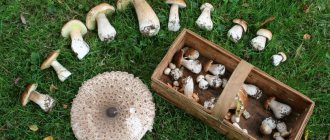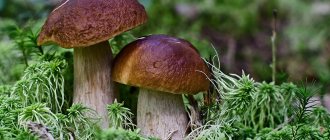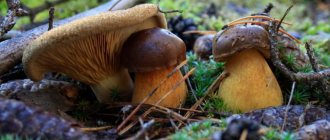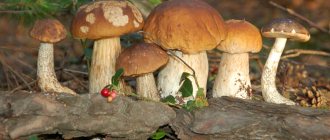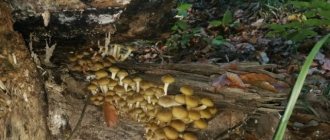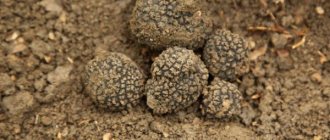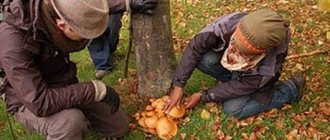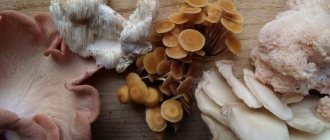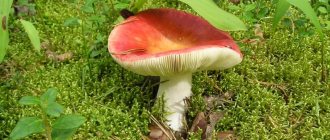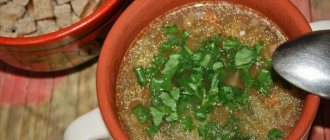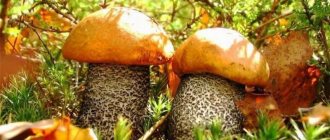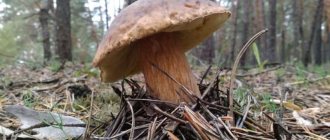In Russia, according to a survey by VTsIOM, almost half of the population picks mushrooms and berries. There are many public pages on social networks in which users share photographs of honey mushrooms and boletus mushrooms they found, as well as impressions of walks in the forest. In September, the American edition of The Wall Street Journal published an article about the hobby of St. Petersburg residents.
“Paper” talked to four residents of St. Petersburg and the Leningrad region about why they love “silent hunting,” how they spend twelve hours in the forest and what they do with hundreds of kilograms of collected mushrooms.
“Cut or twist” and other technical issues of mushroom picking 2022
To cut or to unscrew is not just a long-standing, but a century-old debate.
At the same time, it makes as much sense as a debate about which end to break an egg from - the sharp one or the blunt one. For the mycelium, it is completely indifferent to how the fruiting body was removed from it (“mushroom” in the understanding of the mushroom picker). In 1980, Swiss scientists began an experiment that lasted 27 years. 3 identical forest sites were taken. On one the mushrooms were cut, on the other they were twisted, the third was for control. During the experiment, almost 100,000 mushrooms were collected. Statistical analysis showed a complete absence of difference between fruiting on the sites throughout the entire duration of the experiment. Meanwhile, pensioners should remember that in some regions of our country, fines were previously even introduced against “poachers” who uprooted mushrooms. At the same time, it is clear that mushrooms do not have any “roots,” and no one, not even mycologists (specialists involved in the study of mushrooms as a science), has ever been able to pull out the mycelium threads from the ground after the fruiting body.
Where did this controversy come from? Previously, there was no talk of any cutting tools at all. They went into the forest to “pick mushrooms” - to swing and remove boletus mushrooms from the ground, and to “break milk mushrooms and saffron milk mushrooms” with dense and fragile legs. Despite this, the forests did not become depleted of mushrooms, the mycelium did not suffer from the removal of white mushrooms, and the remains of the broken legs of milk mushrooms and saffron milk caps did not rot.
The question of the “correct” collection of mushrooms arose only at the beginning of the twentieth century, starting with the brochure of the famous Russian botanist R. E. Regel “How to collect mushrooms,” published in 1921. Regel was passionate about growing champignons, and mechanically transferred the problem of champignon growing to the collection of forest mushrooms You can’t boldly “take mushrooms” in a champignon pot like in a forest, powerfully swinging them in different directions: you will damage the thin ground cover layer of soil. It is also undesirable to cut champignons, since the remains of the legs concentrate bacteria and mold and attract insect larvae that infect young growing mushrooms. Therefore, when harvesting the grown crop, the mushrooms are carefully twisted, rotating the mushroom around its axis. But try to unscrew a stocky boletus in the forest! You will simply tear off its cap, but when collecting it you will still “take it”, as our ancestors did. Therefore, when picking mushrooms, you can do it in any way convenient for you.
Tips for collecting, processing and storing mushrooms from Mikhail Vishnevsky
- You should not collect mushrooms in bags or plastic bags - this is how you bring home mushroom spawn. The container can be anything, but it must be solid and preferably ventilated, so no one has come up with anything better than a wicker basket for collecting mushrooms. A bucket is also not an option! Mushrooms in unventilated containers steam, sour and, most importantly, quickly become wormy.
- It makes sense to clean mushrooms of debris right when collecting them to save yourself the hassle of processing. For any mushrooms that will be pickled or marinated (except white ones), it is better to cut the stems shorter so that you don’t have to bother with cleaning them at home.
- You can store the collected mushrooms for no more than a day in the refrigerator or, if it is cool enough outside, for one night on the balcony. Chanterelles can last up to two weeks; truffles, if handled correctly, can last up to a month. If possible, mushrooms brought from the forest should be processed immediately, without delay.
- Mushrooms collected for drying cannot be washed. They only need to be wiped with a damp cloth.
- Before freezing, it is better to boil mushrooms, especially chanterelles. Uncooked chanterelle starts to taste bitter when frozen.
Helpful advice
The methods of searching for mushrooms described above, according to my friend, can and should be combined. For example, a good solution would be to first comb the clearing using the zigzag method, and then move on to the tapering spring route. In any case, the strip of land that the mushroom picker covers with his gaze should change during the search process. When a general inspection of the area is carried out, the viewing angle should be significant. During a detailed examination, the stripe covered by the gaze must be narrowed to shoulder width.
About the time and place of mushroom picking
We all know that a real mushroom picker gets up early. And it is right.
- Now there are a lot of mushroom pickers, and whoever gets up first gets the slippers.
- This is technically convenient: the mushroom caps shine from the morning dew and are clearly visible; Moreover, the rays of the sun are still slanting, they seem to snatch the mushroom from the general landscape, illuminating it from the back and side. At noon, the sun, on the contrary, “masks” the mushrooms.
In general, forest mushrooms always gravitate towards small forests: they love spruce, aspen, and birch forests, and grow in abundance in young pine plantings. Mushrooms are less fond of dense thickets, windbreaks, swampy forests and, on the contrary, “adore” groves among fields, shelterbelts, edges, clearings, edges of clearings (especially pine trees), copses, and slopes of ravines and hills overgrown with sparse forest. The darker and higher the forest, the fewer mushrooms there are. The only exceptions are old pine forests and oak forests. But the favorite place for forest mushrooms is neglected fields and pastures overgrown with mixed young forest.
ADVICE! The abundance of mushrooms on the edges leads to the fact that they are collected there most of all. Therefore, here is a life hack: to collect mushrooms, move away from the edge of the forest towards the field. Enter a field where the grass is tall and there is not a single path. You will be amazed at how much unnoticed porcini mushrooms, boletus, boletus, boletus and even saffron milk caps cost there. Five to twenty meters from the edge of the forest is the distance at which forest mushrooms can “escape” into the field. Mushroom pickers still go a few meters from the forest, but almost never 10-15 and, especially, 20.
ATTENTION! City dwellers should take into account that the larger and more populous the city (and the more industrialized it is), the greater the distance it is advisable to travel from it to pick mushrooms. This is due not only to the fact that the masses of urban mushroom pickers and summer residents steadily rake out all the good mushrooms in a 5-50-kilometer zone, but also to the fact that it is better to stay away from such an environmentally unfavorable place as a city when picking mushrooms. If the city has very large parks (in the case of Moscow, these are Losiny Ostrov and Bitsevsky Forest Park), then, since the forest is an excellent biofilter, once or twice a season you can afford to pick mushrooms there, but you will need to boil them before cooking.
The best time for a "silent hunt"
The most practical advice that experienced mushroom pickers can give is to go for mushrooms early in the morning. In this case, there are many chances to collect a full basket, since the mushrooms shine with dew and are very clearly visible.
Chanterelles are also brightly colored, so they are easy to spot among greenery and pine needles. It is best to take a long stick with you, with which you can move the foliage aside, looking into secluded corners.
The most ideal container for collecting is a basket, since it has holes, thanks to which excess moisture evaporates from the basket and the mushrooms are preserved much better and longer.
About worminess and other mushroom “spoilage”, which should not be forgotten when picking mushrooms
You won’t believe it, but almost all the mushrooms in the forest are wormy. “Worms” are the larvae of insects, fungus flies and mosquitoes. These insects lay eggs on fruiting bodies, and larvae develop from the eggs. You can believe that there are practically no mushrooms left in the forest that are not favored by insects, since every mushroom, even the smallest one, is a whole skyscraper for a mushroom fly. Therefore, when we collect mushrooms, we do not consider those where the larvae are the tiniest (fractions of a millimeter) to be wormy, but those where they have already grown up are considered wormy.
The larvae themselves are not dangerous - they are squirrels, and that’s all. Therefore, there is little point in expelling them from mushrooms with salt water, as is customary among mushroom pickers. But the products of their metabolism cannot be removed with salt water, so it’s not worth trying.
ATTENTION! Destruction (aging) of the fruiting body very rarely occurs on its own. Typically, insect larvae, fungi and bacteria take an active part in it. Mushrooms affected at various stages of development by these organisms are usually considered “sick”; their consumption as food is not recommended, since they may be associated with the risk of poisoning.
I know from myself how pitiful it is to throw away a “sick” or aging porcini mushroom; I want to cut out at least a small “healthy” piece from it. But, I repeat: collecting and cooking old and diseased mushrooms (not wormy ones, but old and moldy ones!) is strictly not recommended.
What not to do?
- The most important rule is do not take a mushroom if you are not sure about it.
- You can't go too far into an unfamiliar forest.
- Mushrooms that have just grown and are still strong should not be touched.
- You cannot pull out mushrooms; they need to be twisted out of the mycelium so as not to damage it.
About mushroom misconceptions about mushroom picking that persist among people in 2021
To this day, the collection and preparation of mushrooms is shrouded in various legends and beliefs. Usually most of them have no scientific basis. These misconceptions do not help mushroom pickers and cause direct harm.
Myth one. “Mushrooms are hiding in the forest”, “they line up in frightening figures”, “the mycelium leaves the mushroom place if the mushrooms are collected rudely”
All our soil mushrooms grow the same. Having begun to develop from one point, the mycelium grows in the form of an empty circle inside (a “steering wheel”), increasing in size every year. That is why sometimes we come across “mushroom rings” of different diameters, both in the forest and in the field. But more often in the field, because in the forest, when it encounters an obstacle, for example, a tree trunk, root, path, the mycelium “bursts.” This is how a semi-ring is formed, and with greater fragmentation - arcs, paths, and then just separate piles.
The mycelium grows throughout its life, and over time “leaves” its suitable places. Then it stops bearing fruit - they also say that “the mushroom place is empty”, and continues silent growth until it again comes across conditions favorable for fruiting. Keep this in mind when picking mushrooms!
Myth two. “All mushrooms that have a stalk ring/skirt or scales are inedible or poisonous.”
Complete nonsense, most of these mushrooms are edible, including champignons, honey mushrooms, scales and delicious umbrellas. Although there are pale grebe and other enemies. You just need to know them by sight when picking mushrooms.
Myth three. “An edible mushroom always smells delicious, an inedible one always smells unpleasant.”
A very dangerous misconception for “silent hunting”. Many talkers and rows in their raw form have a rather unpleasant odor, which is clearly noticeable when picking mushrooms. At the same time, survivors of poisoning with pale toadstool spoke with great reverence about its smell and taste.
Myth four. “If a mushroom is wormy, then it is not poisonous” or “if an animal has tried the mushroom, then it can be eaten”
Here, unfortunately, the principle “what is good for a Russian is death for a German” sometimes works. Many insect larvae, as well as animals and birds, eat the pulp of dangerous mushrooms, including toadstool. For example, toadstool is safe for rabbits, musk deer (a small deer-like animal), and horses. Therefore, the worminess and edibility of a mushroom is not necessarily a sign of edibility.
Myth fifth. “If a mushroom turns green or blue when cut, it is poisonous.”
In our middle zone, a change in the color of the flesh on the cut is usually a sign of edibility.
Myth six. “In dry weather, mushrooms become poisonous”
This is a new fashionable misconception that is still in use in 2022. This is completely false, because the mycelium absorbs any harmful substances only in dissolved form - with water. That is why sometimes you can afford to pick mushrooms within the city, especially in city parks. If you boil them before cooking, metal salts and other contaminants will be almost completely released into the broth, which should be drained.
Mushroom pickers have their own “magic” to check the collected mushrooms. Many people believe that if garlic turns blue or a silver spoon turns black when cooking mushrooms, there are poisonous mushrooms in the pan or jar. Unfortunately, both edible and poisonous species can give this color reaction.
Myth seventh. “Strong salting, plenty of vinegar or many hours of cooking can neutralize any mushroom poison.”
A very harmful misconception. Just the most poisonous mushrooms - pale toadstool, stinking fly agaric, fringed galerina - perfectly withstand not only many hours, but many months of cooking after collection. Salt and vinegar also do not affect all mushroom toxins.
Continuing the theme of mushroom picking 2022 on gastronom.ru, see Mini-encyclopedia of preparing porcini mushrooms: drying, salting, marinating, preparing homemade noodles and julienne
"Stretched spring"
This method is usually used at the edge of the forest, next to clearings. Having discovered an edible mushroom, an experienced mushroom picker puts some noticeable identification mark in its place. Next, the lover of quiet hunting begins to move around him in a spiral.
It will be hot: the Hydrometeorological Center gave a forecast for spring and summer
Denim total look: how to wear the most trendy shades and prints for women 50+
The Ural resident was notified of successful COVID vaccination, although he did not get the vaccine
This method is also suitable for searching for mushrooms in the clearings themselves. In this case, the mushroom picker first stands in the center of the clearing, and then goes around it all in expanding concentric circles. Also, if desired, you can build a similar route in reverse order. That is, start from the edge of the clearing and move in a tapering spiral towards its center.
About buying mushrooms at the market and on the highway
When buying fresh mushrooms at the market, be careful and careful. If possible, try to buy mushrooms from trusted sellers. It is important to be sure that the mushrooms were collected in a forest sufficiently remote from large cities, “dirty” industries and busy highways, otherwise such a purchase will turn into Russian roulette. First of all, this applies to mushrooms purchased on the highway, because who knows - were they collected from this highway?
Be sure to inspect and touch the mushrooms before purchasing to make sure they are fresh. Fresh, young tubular mushrooms and chanterelles have a characteristic density, strength and slight crispness, but not fragility! Don't forget to smell the mushrooms before purchasing. Fresh, recently picked mushrooms will have a pronounced mushroom aroma, mixed with the smell of forest, foliage or pine needles and a little earth. If the mushrooms seem too soft and flabby, or, conversely, dried out, if their smell is no longer pleasant, refuse to purchase. It is impossible to prepare a tasty dish from such mushrooms.
ADVICE! There is one trick used by irresponsible sellers - slipping wormy boletuses and boletuses. Insect larvae usually penetrate these mushrooms through the very base of the stem, buried in the soil, without damaging the skin. Sellers have learned to clean the mushroom stems after harvesting in such a way that an intact layer of skin remains on the outside, and at the bottom there is a small piece of earth (“root”), masking the “entrance” of the larvae. In this case, the pulp itself inside may already be completely eaten away. Usually it is enough just to lightly pick at the bottom of the leg to detect worminess.
It is better not to buy salted and pickled mushrooms at the market at all; the same applies to dried lamellar mushrooms. However, if you are risk-averse or trust the seller, you see that the salted mushrooms are sealed in jars, and the marinated ones in jars are young and not worm-free, then try to make a purchase. It is best to find a permanent supplier with a recipe for canning mushrooms that suits you and a known place for collecting them.
Route one - “comb”
Experienced mushroom pickers, according to a forester friend of mine, usually choose this route in artificial forest belts. These can be reserve plantings, a protective green zone of agricultural land, etc. In such orderly forest lands, you need to navigate along even rows of trunks, which will not allow you to miss a single place in the area.
Continuation of the New Year: Russians’ spending on food has increased sharply
New study shows how nuts affect the heart
NASA's Ingenuity helicopter is on Mars and preparing for a test flight
Also, experienced mushroom pickers in forest belts often use the “comb with a ledge” method. The outline of such a route resembles a comb with teeth of unequal sizes.
Mushroom picker's lunar calendar 2022: Favorable days!
Favorable days of the lunar calendar are distributed at the best time for picking mushrooms, taking into account rainfall.
✅ Phases of the waxing moon for collecting mushrooms
| Month |
